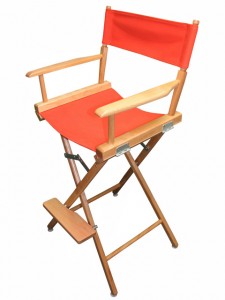 Have you considered adding video to your site? If not, you should know that it’s a great tool to promote and enhance your site and your business, especially a business that relies on tourism like a B&B.
Have you considered adding video to your site? If not, you should know that it’s a great tool to promote and enhance your site and your business, especially a business that relies on tourism like a B&B.
Making a video doesn’t have to be an expensive, time-consuming process. Chances are, you probably already have the tools you need to put one together: A point-and-shoot digital camera with video capabilities (if you’ve bought your camera in the last five years or so, it almost certainly includes a video feature), and the software that came with your operating system, either MovieMaker for Windows or iMovie for Mac. It also helps to have a YouTube account, and a bit of knowledge of how your website works, although it’s not essential — if you’re willing to learn, this series will teach you what you need to know.
Today we’ll discuss some tips for shooting video — best practices to follow to get decent, clear footage using your point and shoot. It won’t be a Spielberg film, but it will be enough to give your site visitors a glimpse into your world.
Tripods
No matter how still you think you’re standing, the camera will still pick up your movements. In still photography, this results in a blurred image, but in video photography, it results in shaky footage, which is hard to watch. Use a tripod or other stationery object to balance your camera and keep it still.
Landscapes
Avoid moving the camera if you’re filming landscapes. Take several 10-second “still” shots instead of panning 360 degrees. Your viewers will get less dizzy, and they’ll get a better sense of how things really look. Alternately, try this: Before pressing record, zoom in on an interesting feature, say a flower bud or a rock next to a stream. Hit record and then zoom out to encompass the entire landscape. Zoom slowly (some cameras have a separate setting for a slow zoom), otherwise it’s a little dizzying.
Panning
If you’re filming something moving, follow the subject with the camera, but not your feet. Try to avoid walking or, really, anything more than pivoting at the waist. The goal is to minimize the camera shake. Pick a good, stationery spot, and use the camera to pan from side to side. Let the subject get larger as it approaches and smaller as it gets farther away. Give it a little lead-room, if you can (in other words, if you’re filming a moose walking through your yard, make sure there’s a little room between his nose and the edge of the frame. Cut off his rump if not everything fits in the frame).
Interviews
When filming people, especially when doing interviews, zoom in so that just their shoulders and their faces are in the frame. Even if the background is beautiful or interesting, it’s the person who is the subject of the interview, not the background. Everything else will just distract from what the interviewee says. If you’re filming a testimonial, you want the focus to be on the great things your customer says, not on where he is standing. Make sure the subjects’ heads don’t touch the top of the frame, but don’t give them so much headroom that their faces are in the middle. Keep the eyes in the top third. Try to avoid cutting the subject off at any joints at the bottom of the frame. This just looks awkward and unnatural, so end the frame at the forearm instead of the elbow, etc.
Audio
The audio that a point and shoot picks up is usually decent enough to use in an informal video. Whenever you film and you plan on including audio, make sure that you’ve eliminated as much background noise as possible: Don’t film next to a busy road if you don’t want the sound of cars passing, for example. If you have an external microphone that can be plugged into your camera for interviews, use it. This will eliminate most of background noise, and will also give you better quality audio. If you plan on including narration in your video, wait until you get to the editing section and use your microphone to do a voice-over, rather than narrating while you film. This gives you better audio and your voice won’t have that breathless quality.
Lighting
It should go without saying that you should always seek out or set up proper lighting. See the photography tips article for more on lighting.
If you haven’t shot a lot of video with your camera, take it out and practice, and use some of these tips as you do. The more you use them, the better you’ll get at shooting video. Next time, we’ll discuss how to put together and edit all that footage you’ve gotten by practicing the tips above.